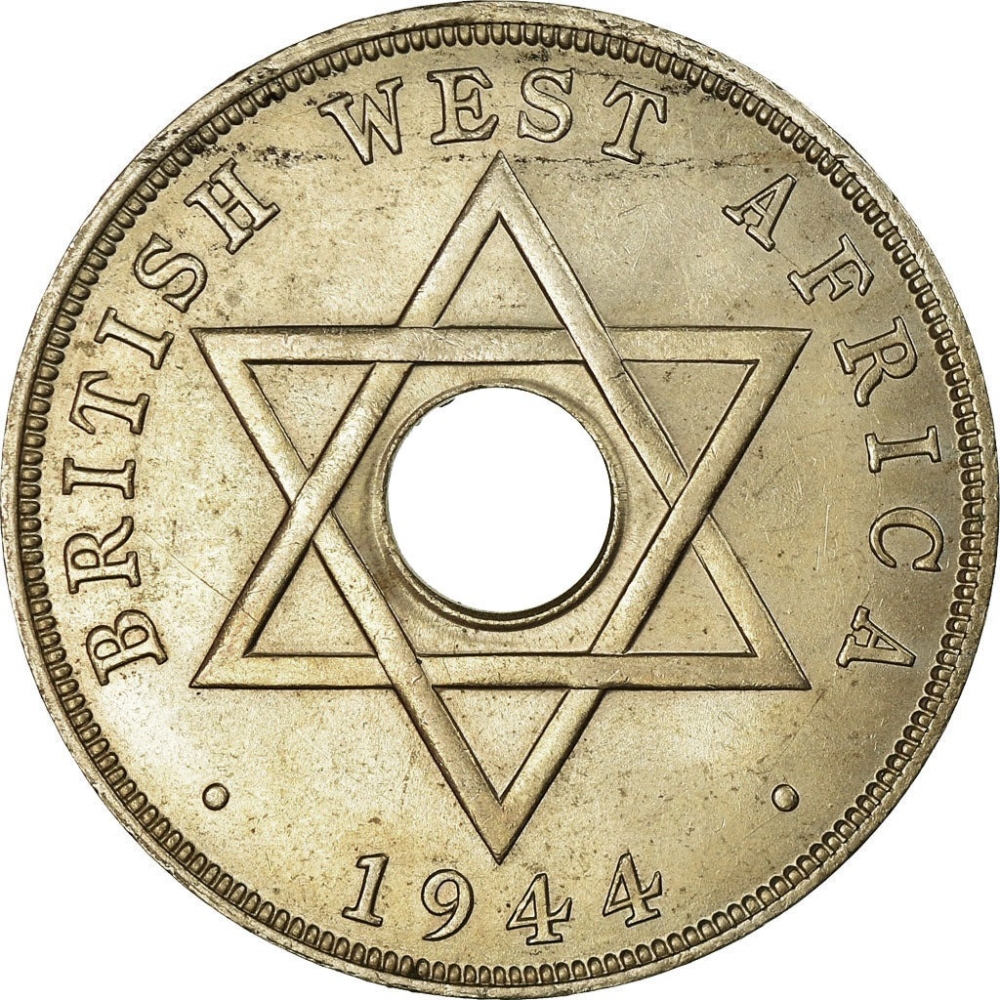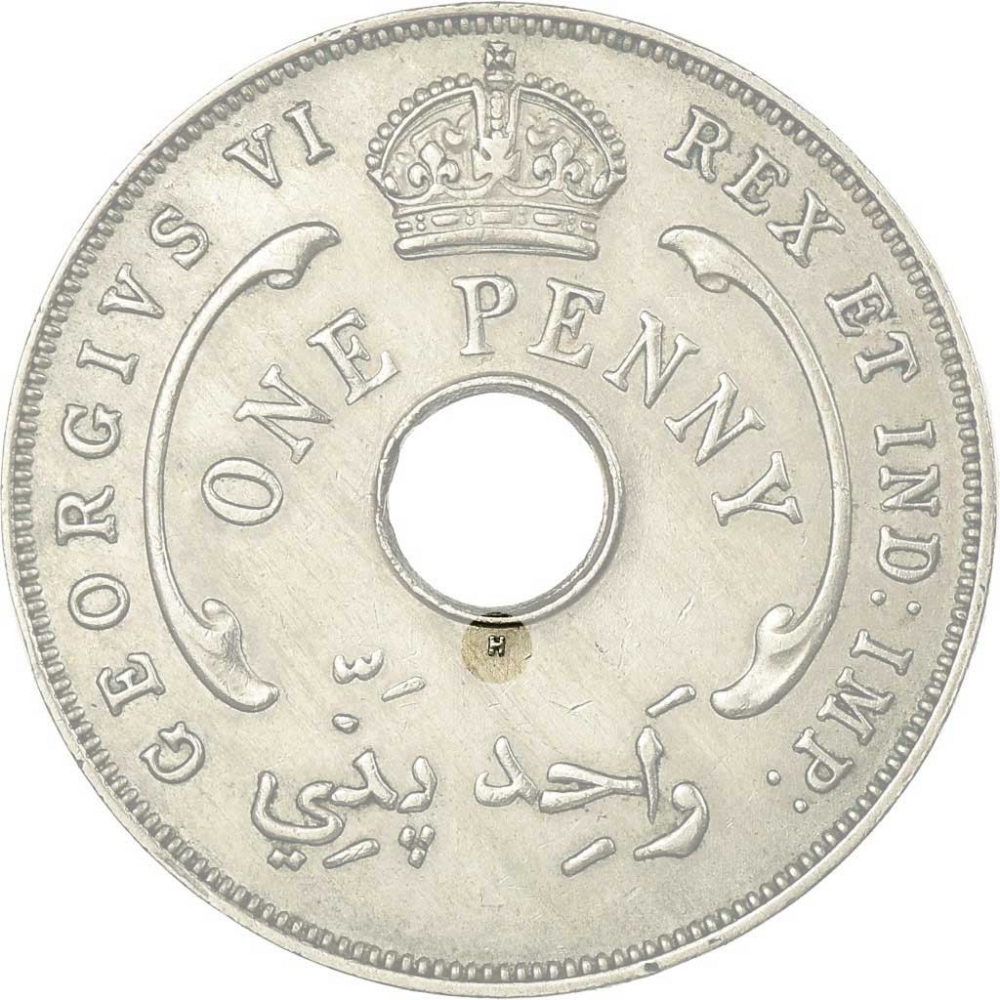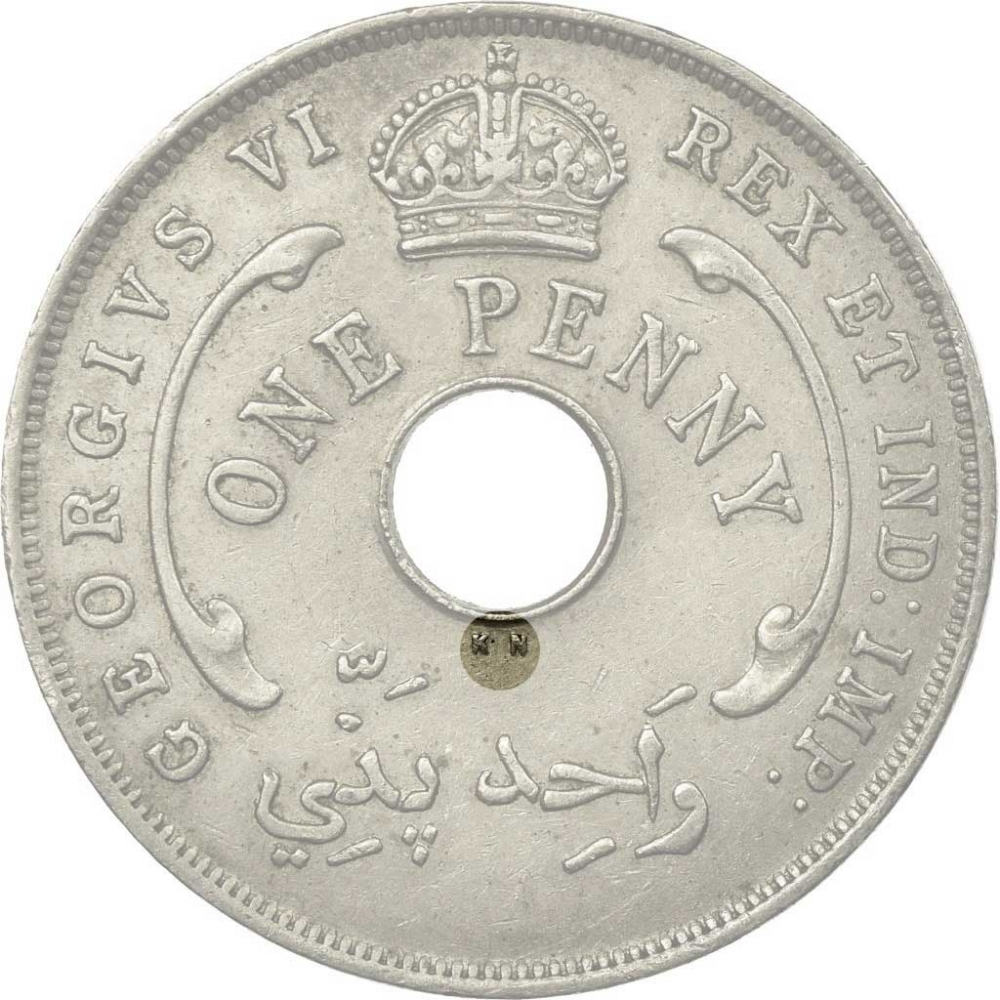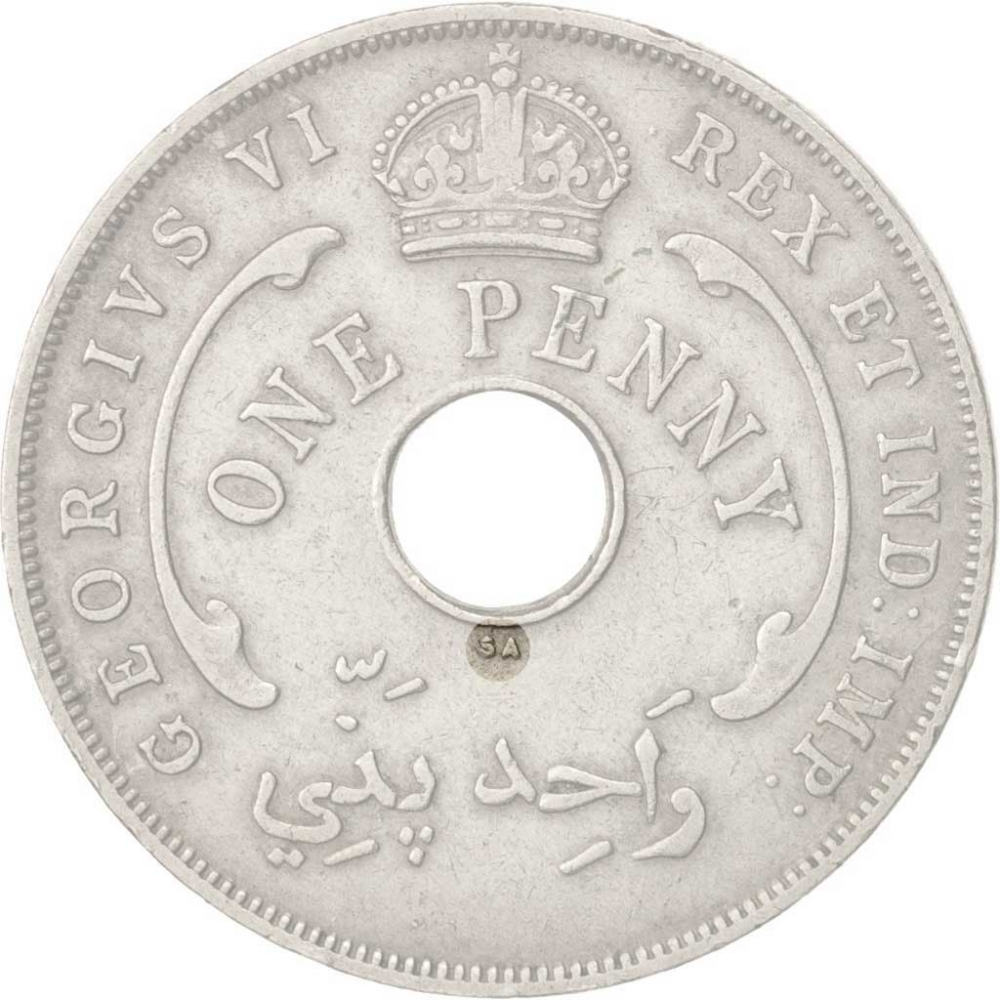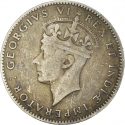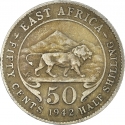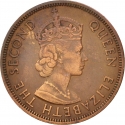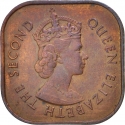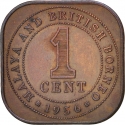You are about to finish your registration. Please check your mailbox (including spam folder). There should be a letter with a confirmation link. Check setting to make sure that your e-mail address is correct.
Send letter againDescription
British West Africa was the collective name for British colonies in West Africa during the colonial period, either in the general geographical sense or more specifically those comprised in a formal colonial administrative entity. The United Kingdom held varying parts of these territories or the whole throughout the 19th century. From west to east, the colonies became the independent countries of the Gambia, Sierra Leone, Ghana, and Nigeria.
Obverse

|
An imperial crown above a central circular hole with a scroll ornament to right and left; below crown and around the hole, the denomination in English; around, outside the scroll ornaments, the legend "George VI Rex et Indiae Imperator" (King and Emperor of Indies)"; below the hole, the denomination in Arabic. GEORGIVS VI REX ET IND:IMP: |
|---|---|
Reverse

|
Around circular central hole, Solomon's seal (six-pointed "Star of David"); around above country name; below, the star divides the date. BRITISH WEST AFRICA |
| Edge |
Characteristics
| Material | Cupronickel |
| Weight | 9.5 g |
| Diameter | 30.8 mm |
| Thickness | 1.6 mm |
| Shape |
|
| Alignment | Medal |
| Mints |
Heaton Mint, Birmingham (H) Kings Norton Metal Company, Birmingham (KN) Pretoria Mint, South Africa (SA) Royal Mint
|

